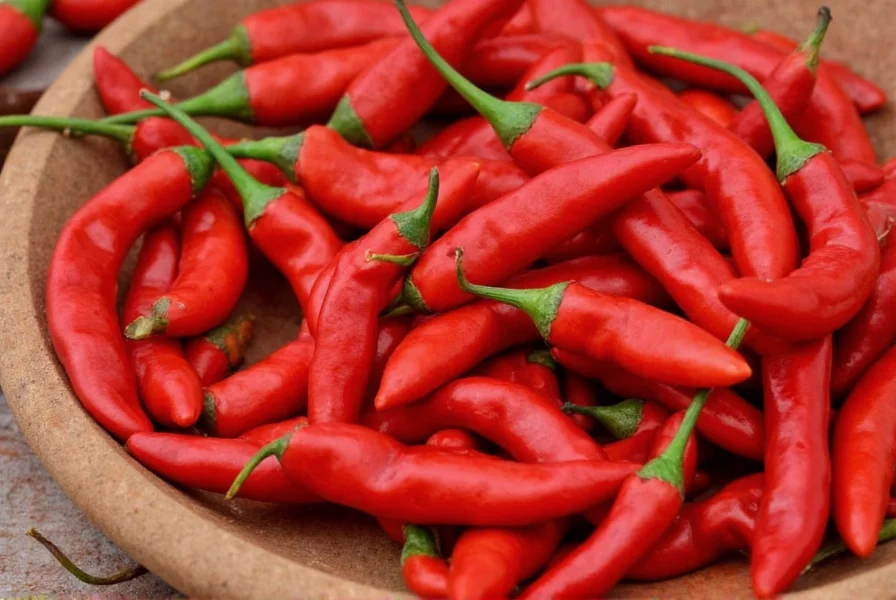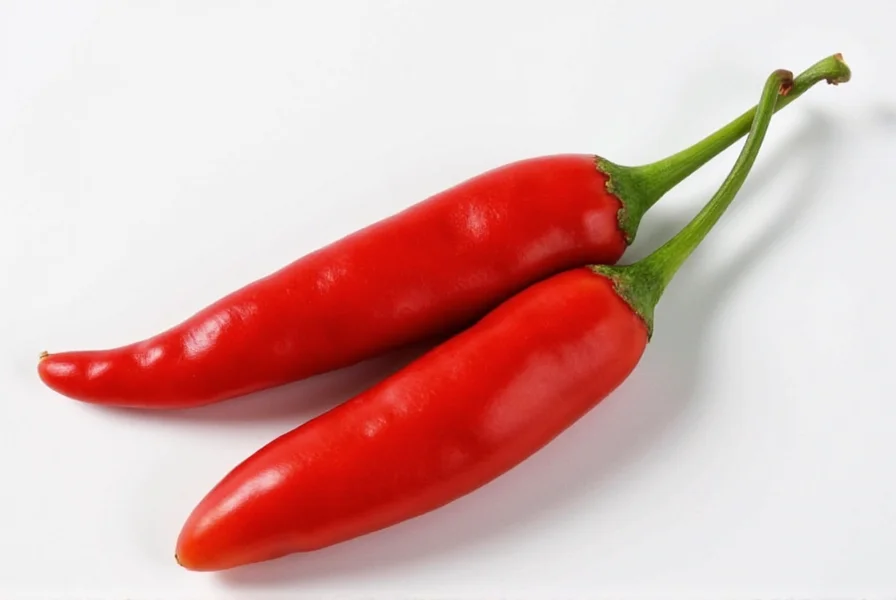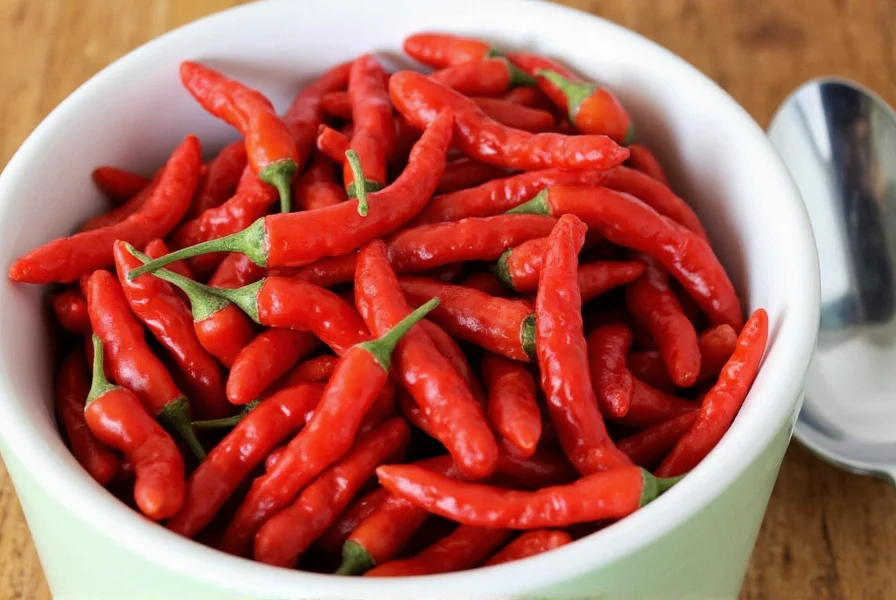Chile de Arbol: The Spicy Star of Mexican Cuisine (And Why You Need It in Your Kitchen)
Table of Contents
Introduction to Chile de Arbol
When it comes to spicy ingredients, few are as iconic or versatile as the chile de arbol. This small but mighty chili pepper has been a staple in Mexican cuisine for centuries, adding a fiery kick to salsas, moles, and countless other dishes. But what exactly is a chile de arbol, and why does it deserve a spot on your spice rack?
Translated from Spanish, “chile de arbol” literally means “tree chili.” While it doesn’t grow on a tree, the name refers to its upright, branching growth pattern. These peppers are typically long and thin, ranging in color from bright red to deep orange, with a slightly wrinkled texture. They’re not just hot—they’re also packed with flavor and versatility.

Understanding the Spice Profile
The chile de arbol is known for its intense heat, which ranges between 15,000 to 30,000 Scoville Heat Units (SHU). For comparison, that’s about the same as a jalapeño but significantly hotter than a poblano. The heat is concentrated in the seeds and membranes, so if you want to dial it down, be sure to remove those parts before using.
Beyond the heat, this pepper delivers a complex flavor profile. It has a smoky, earthy undertone with a subtle sweetness, making it perfect for balancing out bold or acidic ingredients. Its vibrant color also makes it a great addition to any dish that needs a pop of red.

What Is a Chile de Arbol? A Quick Recap
So, what is a chile de arbol? It’s a type of chili pepper native to Mexico, prized for its heat, flavor, and versatility. Whether you’re making a spicy salsa, a rich mole sauce, or a simple chili oil, this pepper brings both heat and depth to your cooking.
Culinary Uses and Flavor Pairings
The chile de arbol is a workhorse in the kitchen. It’s used in everything from salsas and sauces to stews and marinades. Here are some of its most popular culinary applications:
- Salsa Roja: A classic Mexican red salsa made by roasting and blending chiles de arbol with tomatoes, onions, garlic, and spices.
- Mole Poblano: This rich, complex sauce often includes dried chiles de arbol for added depth and heat.
- Chili Oil: Infusing chiles de arbol into oil creates a fiery condiment that adds a punch to tacos, soups, and more.
- Spicy Dips and Sauces: Use them in guacamole, hummus, or even as a base for buffalo sauce.
This pepper pairs well with ingredients like garlic, onion, cumin, and lime. It also works beautifully in combination with other chiles, such as ancho or pasilla, to create layered flavor profiles.

Buying Guide for Chile de Arbol
If you're new to chile de arbol, here's a quick guide to help you choose the best one for your needs:
Types of Chile de Arbol
There are several varieties of chile de arbol, each with slight differences in heat level, flavor, and appearance:
- Green Chile de Arbol: Milder and slightly tangy, ideal for fresh use in salsas or pickling.
- Dried Chile de Arbol: More intense in flavor and heat, commonly used in sauces and stews.
Key Features to Look For
When selecting chile de arbol, look for the following qualities:
- Color: Bright red or orange indicates ripeness and optimal flavor.
- Texture: Firm and slightly wrinkled, not shriveled or discolored.
- Smell: Fresh, aromatic, with no signs of mold or spoilage.
Recommended Products
| Product | Features | Use Cases | Target Audience | Suitable Occasions |
|---|---|---|---|---|
| Organic Chile de Arbol | Non-GMO, sustainably grown, no chemical additives | Perfect for health-conscious cooks and authentic Mexican recipes | Chefs, home cooks, food enthusiasts | Weekend cooking, family dinners, holiday meals |
| Spicy Chile de Arbol Paste | Ready-to-use paste with intense flavor and heat | Ideal for quick sauces, marinades, and dips | Busy professionals, casual cooks | Lunchtime meals, potlucks, dinner parties |
| Roasted Chile de Arbol | Smoked and ready to blend into salsas or stews | Great for adding smokiness to sauces and dressings | Foodies, chefs, spice lovers | Cooking classes, gourmet gatherings, restaurant prep |
Cooking Tips and Substitutes
Whether you're a seasoned chef or a home cook, these tips will help you make the most of chile de arbol:
- Roast Before Using: Roasting enhances the pepper's natural sweetness and smokiness. Simply place them on a baking sheet and roast at 400°F (200°C) until they blister and darken.
- Use Gloves: Always wear gloves when handling chile de arbol to avoid transferring capsaicin to your skin or eyes.
- Adjust Heat Level: If you want less heat, remove the seeds and membranes before using. For more heat, leave them in or use more peppers.
- Pair With Acid: Balance the heat with acidic ingredients like lime juice or vinegar.
If you don't have chile de arbol, here are some substitutes:
- Jalapeño: Milder but still provides a similar freshness and mild heat.
- Chipotle Pepper: Smoky and hot, but more intense—use sparingly.
- Ancho Chili: Milder and sweeter, good for adding depth without too much heat.

Conclusion
The chile de arbol is more than just a spicy ingredient—it’s a cultural cornerstone and a flavor powerhouse. Whether you’re making a traditional Mexican dish or experimenting with new recipes, this pepper brings both heat and complexity to the table. Understanding what is a chile de arbol is the first step toward unlocking its full potential in your kitchen.
With the right tools, techniques, and a little bit of courage, you can confidently incorporate this fiery favorite into your cooking. So next time you see a bag of chile de arbol at the market, remember: it’s not just a pepper—it’s a flavor adventure waiting to happen.










 浙公网安备
33010002000092号
浙公网安备
33010002000092号 浙B2-20120091-4
浙B2-20120091-4